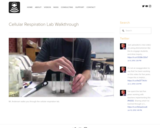
Mr. Andersen walks you through the cellular respiration lab.
- Subject:
- Agriculture & Natural Science
- Biology
- Material Type:
- Lesson
- Provider:
- Bozeman Science
- Date Added:
- 05/29/2014

Mr. Andersen walks you through the cellular respiration lab.

In this podcast Paul Andersen explains how cells differentiate to become tissue specific. He also explains the role of transcription factors in gene regulation. The location of a cell within the blastula ultimately determines its fate. The SrY gene is an important external stimuli in human development.

Paul Andersen explains how variation is created within a cell. He starts by showing how molecular variation can increase fitness at the local level. He explains how an additional chlorophyll molecule allows plants to absorb more light from the sun.
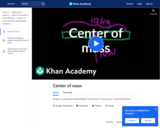
Introduction to the center of mass
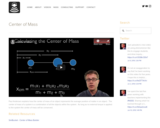
Paul Andersen explains how the center of mass of an object represents the average position of matter in an object. The center of mass of a system is a combination of all the objects within the system. As long as no external torque is applied to the system the center of mass will be conserved.

The premier site for any communicable disease research information, patient education or updates on public health and new findings.
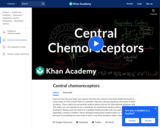
Find out how the your body uses special cells that are central to the brain (inside the brain) to sense levels of CO2 and pH. Rishi is a pediatric infectious disease physician and works at Khan Academy. These videos do not provide medical advice and are for informational purposes only. The videos are not intended to be a substitute for professional medical advice, diagnosis or treatment. Always seek the advice of a qualified health provider with any questions you may have regarding a medical condition. Never disregard professional medical advice or delay in seeking it because of something you have read or seen in any Khan Academy video.
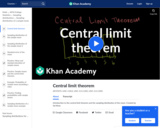
Introduction to the central limit theorem and the sampling distribution of the mean
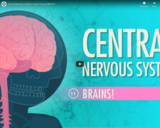
The video resource "Central Nervous System: Crash Course A&P #11" is included in the "Anatomy & Physiology " course from the resources series of "Crash Course". Crash Course is a educational video series from John and Hank Green.
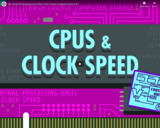
The video resource "The Central Processing Unit (CPU): Crash Course Computer Science #7" is included in the "Computer Science" course from the resources series of "Crash Course". Crash Course is a educational video series from John and Hank Green.
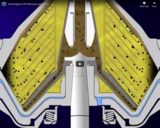
GFP Recovery begins with the arrival of the broth tank. A sterile hose is run from the broth tank to the Disk-Stack Centrifuge, and the tank is pressurized to drive the broth into the centrifuge. Once the centrifuge reaches a stable running speed...the inlet valve is opened and broth enters the bowl. The centrifugal force causes the solids to collect on the sides of the bowl - much like the spin cycle on your clothes washer. The liquid flows through and out of the centrifuge. As more broth enters the bowl, it displaces the clarified liquid to the top of the bowl where it exits, while the cells continue to build up on the bowl surface. The centrifuge has an integrated R-P-M monitor. If the unit is not rotating at a stable running speed, the controller will alarm and shut it down. The liquid leaving the bowl is known as the clarified stream, because almost all the solids have been removed. The solids are the E.coli cells, and they contain the product. A sensor monitors the clarified stream for percent solids. When the bowl has reached capacity for solids, the bowl opens and the solids are discharged into an appropriate container for collection. Once the solids are discharged, the centrifugation step can resume, while the clarified liquid is waste. At this point, the cells are in a paste form, and although most of the liquid has been removed, our cell paste is still about forty percent liquid by weight. The remaining liquid contains high levels of metabolites and salts that could complicate downstream processing, so we're going to lower those levels by washing the cells. The cell paste is suspended in a buffered solution and then run through the centrifuge again. As the clarified liquid leaves the centrifuge this time, it carries many of the contaminants from the fermentation step with it.

The direction of the force in cases of circular motion at constant speeds
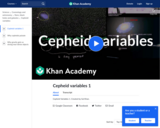
Cepheid Variables 1

The sparks will fly as The Professor discusses element number 58. This video is one of the 118 clips included in the periodic table of elements themed collection created by Brady Haran and the University of Nottingham in the UK.

The resource "Chaining jQuery methods" is included in the "jQuery techniques" section of the "HTML/JS: Making webpages interactive with jQuery" course from Khan Academy. Some of the topics included in this resource are: HTML, Javascript, JQuery.

This video is from the Khan Academy subject of Math on the topic of Calculus and it covers Chain rule definition and example.
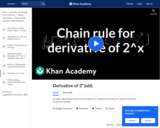
This video is from the Khan Academy subject of Math on the topic of Calculus and it covers Chain rule for derivative of 2^x.
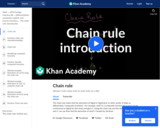
This video is from the Khan Academy subject of Math on the topic of Calculus and it covers Chain rule introduction.
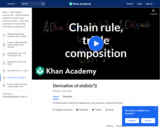
This video is from the Khan Academy subject of Math on the topic of Calculus and it covers Chain rule with triple composition.

Chair and Boat Shapes for Cyclohexane